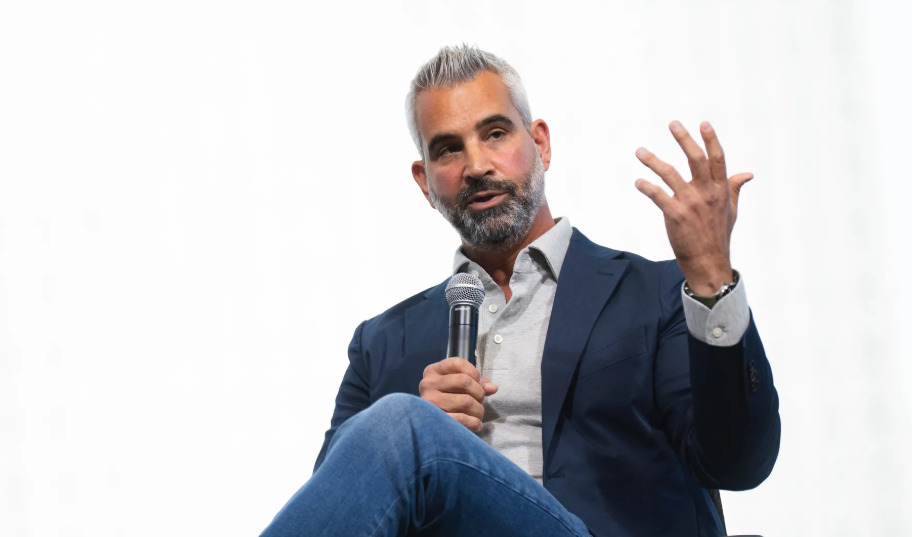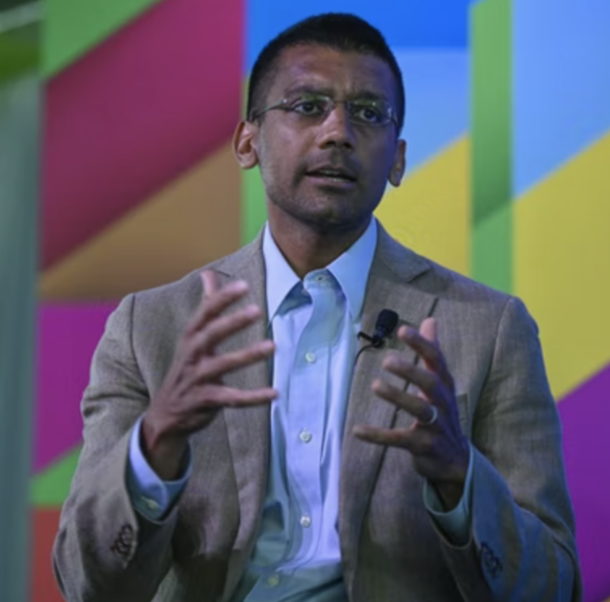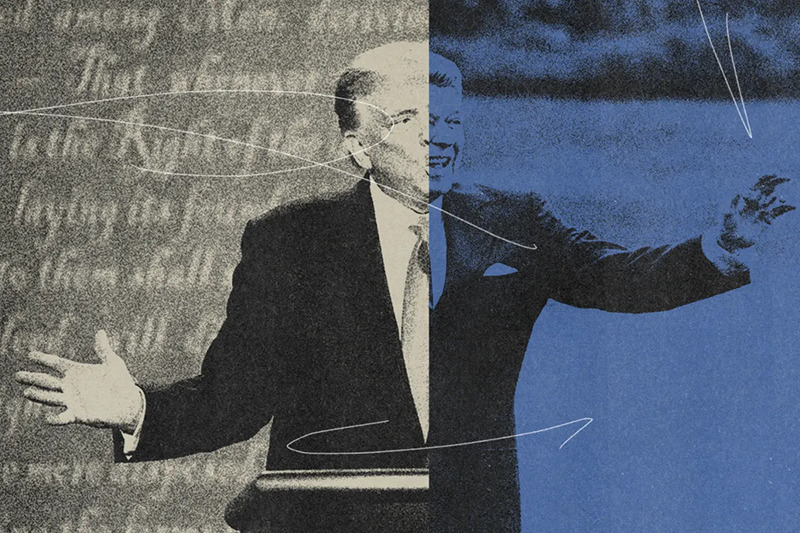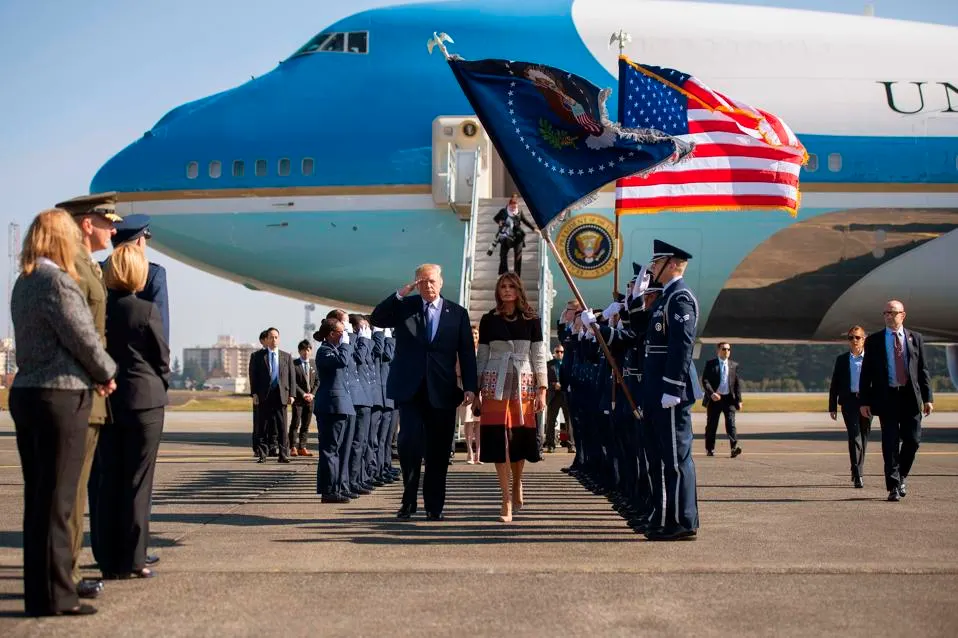
Sara Fischer: New GroupM CEO unveils 5-year plan
By Sara Fischer: GroupM, the largest media buying agency by revenue, is shifting its business to focus on many big data sets instead of a single…
Thought Leader: Sara Fischer

Dave Chokshi is a clinical professor of population health at the NYU Grossman School of Medicine and a primary care internist at Bellevue Hospital. As commissioner of the New York City Department of Health and Mental Hygiene, Chokshi led the city’s response to the COVID-19 pandemic, including its campaign to vaccinate over 6 million New Yorkers. During Aspen Ideas: Health 2022, he moderated a conversation with fellow health care and public health leaders about the challenges the fields face, their motivations to do the work they do, and their advice for the new generation of doctors, nurses, and public health professionals.
Here, he shares his own thoughts:
As the first doctor in my family, I didn’t have direct role models showing me what it meant to practice medicine. But I had plenty of experiences—from getting hospitalized with asthma attacks when I was a child, to my father’s decades-long challenges with diabetes—that showed me how health was linked to opportunity. This has remained a guiding light for me, the notion that health—not medicine, not healthcare—is what is most valued by the people we serve, and that is fundamental to a fulfilling life.
I also had a number of formative experiences early in my career:
I was part of a student organization known as Universities Allied for Essential Medicines, working to improve access to medicines in low-income countries. This was during another pandemic, around the turn of the century, and it was unbelievable to me that HIV/AIDS medicines were not reaching the places they were most needed—particularly in parts of Africa and Asia. The lesson I took was that science and innovation are not enough. We need follow-through as much as we need breakthroughs.
I also worked for the Louisiana Department of Health before and after Hurricane Katrina, witnessing with my own eyes the devastation it wrought on families that I knew and communities that I grew up in, having been raised in Baton Rouge. I saw in a visceral way that those who were already living on the margins were the most likely to be further marginalized during a time of crisis.
During the pandemic, I often found myself remembering my residency training (at Brigham & Women’s Hospital). During my first year of residency—a time when one is constantly confronted by what you don’t know, by your own shortcomings—the more senior doctors conveyed simple wisdom that has stuck with me. “All you can do is keep putting one foot in front of the other” and “The secret of the care of the patient is in caring for the patient.” Being in public health or health care over the past two years has required calling upon this training, and our deepest foundations, often just to show up and make it through another day.
At the same time, the pandemic has also shown us what we are capable of, particularly when we most need to rise to the occasion. I remember walking through Bellevue Hospital, where I practice, in March 2020, approaching the height of the devastating first COVID-19 surge in New York City. I saw my colleagues transform the waiting room of a clinic into a fully-functioning ICU within the span of a few hours! I also saw how false barriers to progress could melt away in the heat of a crisis. For instance, we had been working on shifting our health system to telehealth for years before the pandemic. It was halting, gradual work. And then, almost overnight, almost all ambulatory care was shifted to a telemedicine model, because we had to. We have to keep these examples in mind as we confront slower-moving disasters, and remember that sense of will and volition.
I think of two layers of coping with burnout. The first layer is likely more familiar: doing the things that we know are replenishing and nourishing for the soul—sleep, healthy eating, physical activity, meditation, and connecting with friends and family. We know how important these things are, but it is always difficult to figure out how to spend enough time on them. For me, thinking about how to make these habits has been the trick for actually sustaining good and replenishing practices. For example, I do a standing monthly video call with two dear friends, modeled around the Japanese practice of moai.
The second layer is to recognize that the root of so much burnout is not individual but rather systemic and structural, such as inadequate funding or bureaucratic barriers. Each person has to figure out the right way to tackle these more systemic causes of burnout, whether it is trying to do so from a leadership position, or figuring out a path for advocacy that feels worthwhile. One thing to pay attention to when doing so is feeling a sensation of “flow” in that work. When does it feel more like you are being propelled, rather than having to push yourself? In my experience, this often comes from being engaged in collective action; building or joining a movement draws upon both the human desire for connection as well as strength in numbers.
First, let’s not mince words in describing how serious of a crisis health workers are facing. Rather—we should think of it as multiple, intersecting crises. Growing demands amidst an ebbing of support; less time on care and more time on paperwork; confronting racism, poverty, trauma, and an assault on fundamental rights of our patients; and threats of violence to ourselves and our colleagues. So my first thought for leaders of these institutions is to “turn the spotlight inward” and think about what practices or policies may be worsening these trends and change them, before layering on new programs.
Moral injury is a common thread across the threats to the well-being of health workers. Moral injury refers to the sense of powerlessness and confinement within systems that keep health workers from healing the people we aim to serve. It is about failing to meet our patients’ needs. For instance, being unable to address the core issue leading to a deterioration of the health of a person experiencing homelessness: a lack of housing. To address moral injury, we will need more fundamental changes to our systems of health and social care. I’m grateful that Surgeon General Vivek Murthy’s recent advisory on health worker burnout catalogs ways for different organizations to act on these systemic issues.
The last two years have been particularly tough for health workers. Navigating the pandemic has been isolating, frightening, exhausting, and humbling. But that struggle can bring about change—if we will it to. Now is the time to be investing in human resources for health, and building the resilience of systems that support them. We have a once-in-a-generation opportunity to resource and reimagine our health workforce, and to shift our “sick care” system to one that preserves and promotes health.
The workforce itself must be derived from the communities being served—professionals such as nurses, doctors, and pharmacists as well as community health workers. When organized well, community health workers can identify local concerns, risks, and causes of suffering; disseminate science-based information and promote health literacy; generate health advocacy networks, particularly around racial equity; link neighborhood knowledge with clinical expertise and public health surveillance; and create a culture of disease prevention that acknowledges the social determinants of health. We cannot afford to build our health infrastructure from scratch each time an emergency strikes. Investing in health workers builds a bulwark against future emergencies—and would be a leap forward in the times between—for slower-moving disasters from chronic diseases to climate change.
Sara Fischer: New GroupM CEO unveils 5-year plan
By Sara Fischer: GroupM, the largest media buying agency by revenue, is shifting its business to focus on many big data sets instead of a single…
Thought Leader: Sara Fischer
Niall Ferguson: How to Win the New Cold War
To Compete with Chine, Trump Should Learn from Reagan By WWSG exclusive thought leader, Niall Ferguson Donald Trump’s 2024 presidential campaign very deliberately echoed the…
Thought Leader: Niall Ferguson
Evan Feigenbaum: Asian Governments And Markets Face A Strategic Whirlwind From Trump
This piece by by WWSG thought leader, Evan Feigenbaum. When Donald Trump takes office for a second term as U.S. president, savvy Asian players should…
Thought Leader: Evan Feigenbaum

